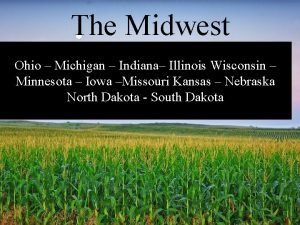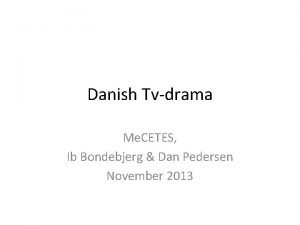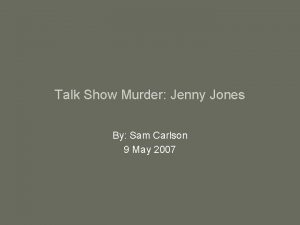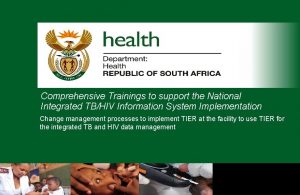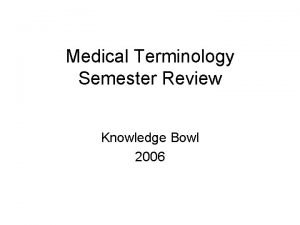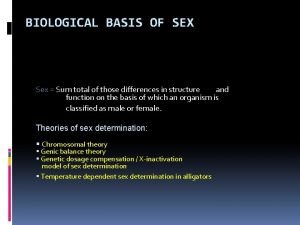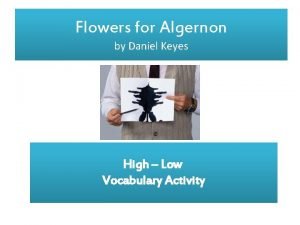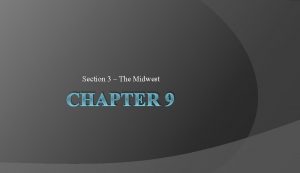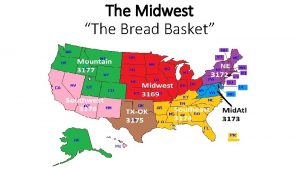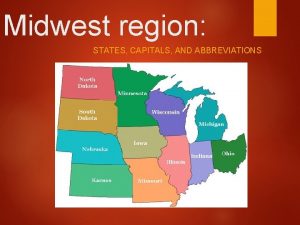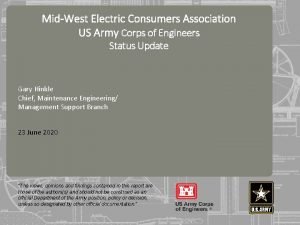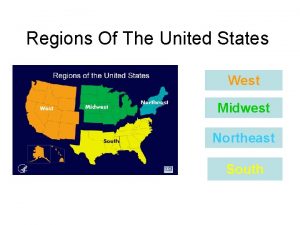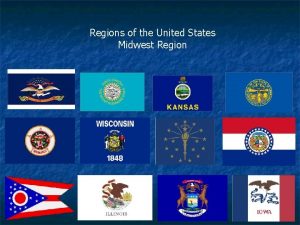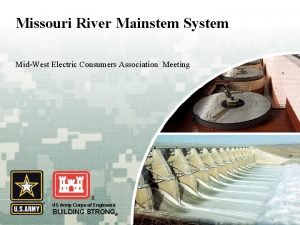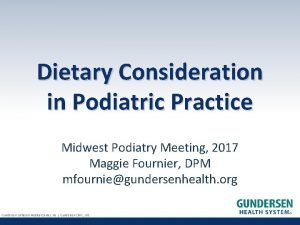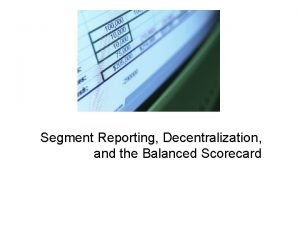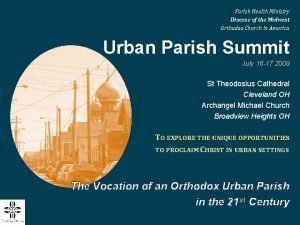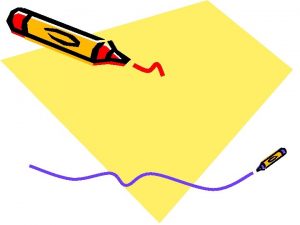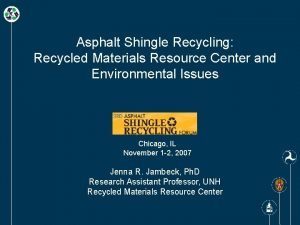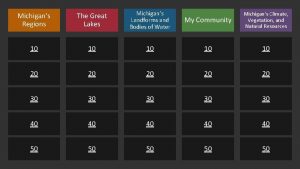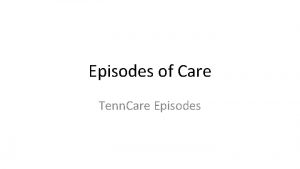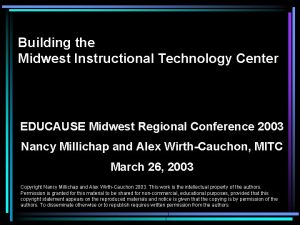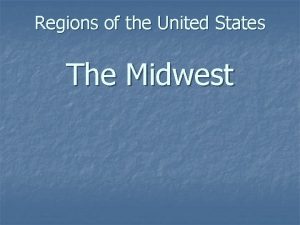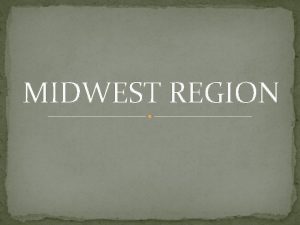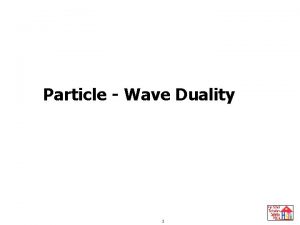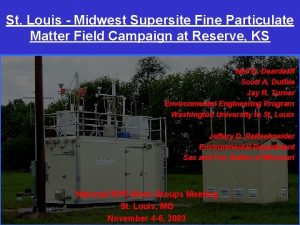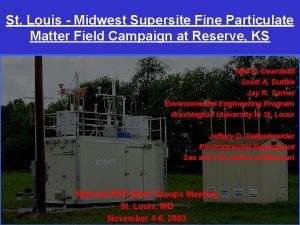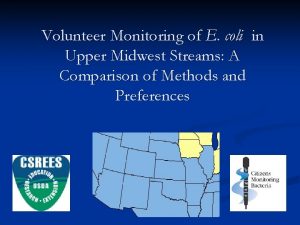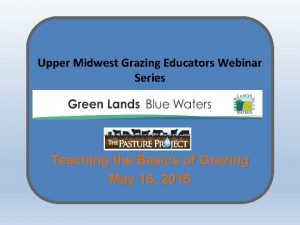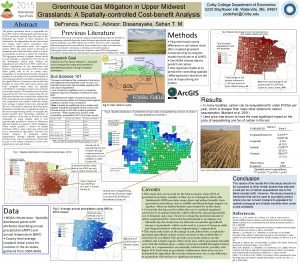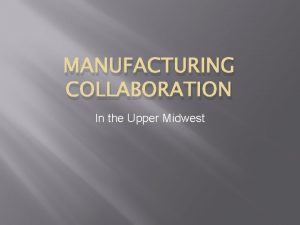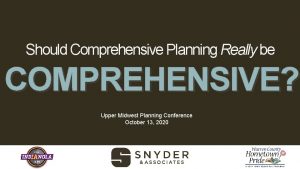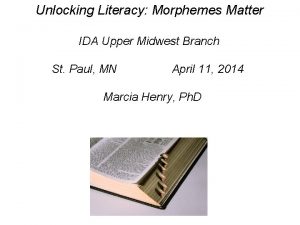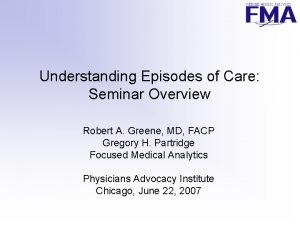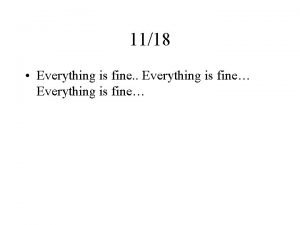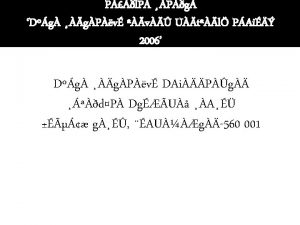Understanding fine particle episodes in the Upper Midwest























































- Slides: 55

Understanding fine particle episodes in the Upper Midwest during the 2009 LADCO Winter Nitrate Study using CMAQ and CAMx: model performance, processes, and response to emissions controls Charles Stanier – University of Iowa charles-stanier@uiowa. edu 319 -335 -1399 CENTER FOR GLOBAL AND REGIONAL ENVIRONMENTAL R

Co-authors and Acknowledgements • University of Iowa – – – – – • Scott Spak Gregory Carmichael Charles Stanier Jaemeen Baek Sang Rin Lee Yoo Jung Kim Timothy Rohlf Sinan Sousan Ashish Singh • Measurements • LADCO (Lake Michigan Air Directors Consortium) University of Illinois EPRI – Stephanie Shaw – Naresh Kumar Sept 9, 2010 Eric Edgerton (ARA Inc) Mike Caughey (ISWS) Wisconsin DNR staff Joe Leair, Jerry Medinger, Dan Nickolie, Mary Mertes, Bruce Rodger, and Bart Sponseller – Site operators by John Hillery, Janel Hanrahan, Laura Carnahan – – – Nicole Riemer • – – Michael Koerber Donna Kenski Mark Janssen Abigail Fontaine • Wisconsin DNR • Funding – Michael Majewski – Bill Adamski – LADCO – Electric Power Research Institute IDNR Workgroup - Stanier 2

Motivation? • Recurrent cold weather PM 2. 5 episodes greatly influence air quality in this region. • Similarities to California’s Central Valley (Pun and Seigneur 1999; Mc. Murry, Shepherd et al. 2004) and to Northwestern Europe and the Po Valley of Italy (Schaap, van Loon et al. 2004; Putaud, Van Dingenen et al. 2010). • What is known? – Episodes are tightly coupled with meteorological conditions. – Ammonium nitrate comprises a large fraction of the PM 2. 5 during episodes. – Chu 2004; Mc. Murry, Shepherd et al. 2004; Blanchard and Tanenbaum 2008; Klatzman, Rutter et al. 2009; LADCO 2009; Pitchford, Poirot et al. 2009. 3

LADCO Winter Nitrate Study (Jan 1 – Mar 31, 2009) 4

Species PM 2. 5 SO 4 NO 3 NH 4 HNO 3 NH 3 NOy NOx (note 6) SO 2 (note 7) Temperature Wind Speed Wind direction NH 3 Averaging time (hr) 1 hr 1 hr 1 hr 24 hr Species PM 2. 5 NH 4 NO 3 SO 4 OC EC O 3 Relative Humidity Surface pressure Visibility Precipitation HNO 3 H 2 SO 3, H 2 SO 4 Averaging time (hr) 24 hr 1 in 3 days 24 hr 1 in 3 days 1 hr 1 hr 1 hr 24 hr

Science Questions for the Study Composition: Typical chemical composition during episodes and nonepisodes? Urban-rural contrast: Differences in PM 2. 5 concentrations (frequency and severity), chemical composition, and source regions? Meteorology: What meteorological conditions favor winter-time episodes? How can we best use this information to improve wintertime episode forecasting? Nitrate formation chemistry: What do the data tell us the nitrate formation chemistry leading to events? Sensitivity of episodes: • How sensitive are concentrations to hypothetical changes in total nitrate, total ammonia, and total sulfate? • What sources categories have leverage on episodes? Do local sources have influence? 3 D Model skill: Can photochemical modeling accurately predict PM 2. 5 concentrations during the observed winter-time episodes? 6

PM 2. 5 (µg m-3) 60 40 20 0 Jan Feb Parameter PM 2. 5 (µg m-3) Total nitrate (µg m-3) Total ammonia (µg m-3) Gas ammonia (ppb) Nitrate aerosol / total nitrate NOy (ppb) Temperature (°C) Ozone (ppb) OC (µg m-3) EC (µg m-3) Gas Ratio (d’less) Mar Milwaukee (Urban) 17. 1 5. 6 3. 3 2. 3 78% 27 -3 22 3. 6 0. 5 1. 5 Mayville (Rural) 11. 7 4. 8 3. 3 2. 4 69% 6. 3 -5 31 3. 2 0. 3 1. 7

Detailed view of an episode Agreement between multiple independent measurements

PM 2. 5 fraction PM 2. 5 (µg m-3) Composition Gas ratios (ammonia availability) ranges 1. 0 -1. 7. Lowest at the rural site during episodes. Evidence of gas ratio ↓ during episodes at multiple sites in the region.

Urban-Rural Contrast During Episodes Some excess in total nitrate, but nitrate and ammonium appear predominantly regional. For aerosol species, urban excess of OC during episodes is significant.

Meteorology • • Episodes began under similar synoptic conditions – arrival of a surface low pressure system. Episodes were marked by inversions with warm, moist air and low wind speeds. Snow cover and fog were both correlated with episode occurrence. Regional snow cover was present over southeastern Wisconsin and northern Illinois at the onset of late winter episodes and usually melted by episode end.

Model Configuration • Community Multiscale Air Quality Model (CMAQ) v 4. 7. 1 – – • LADCO’s 12 km regional modeling grid – • Hourly boundary conditions from a 36 km simulation (with the same configuration) covering the continental United States. Meteorology – – – – • CB 05 gas phase / AERO 5 aerosol module ACM 2 PBL closure Mass-conserving advection 14 vertical layers WRF 3. 1. 1 with the RPO configuration selected by Iowa DNR, SESARM, and LADCO ACM 2 PBL closure Pleim-Xu land surface module RRTM radiation Morrison microphysics Kain-Fritsch cumulus Boundary meteorology from the North American Regional Reanalysis 3 -hourly Analysis nudging on NARR above the PBL (no direct observational nudging) Emissions – – – LADCO’s 2008 emissions inventory used for 12 km domain. Day-specific biomass burning emissions from MODIS fire detection products. NEI with day- specific biomass burning will be used for 36 km continental simulations. • Process Analysis – Chemical and process rates stored for all layers up to 550 m, with focus on NOy processing and N 2 O 5 heterogeneous chemistry

Network Species Observed Model AQS Ozone 29. 8 35. 0 Improve PM 2. 5 7. 0 8. 6 SO 4 1. 8 2. 6 PM 2. 5 12. 1 15. 4 NO 3 3. 0 NH 4 1. 7 2. 0 SO 4 2. 4 3. 6 J-III J-IV 29 -Jan 100. 0 Mil PM 2. 5(h)_model 22 -Jan Mil PM 2. 5(h)_obs Mil epi F-III F-IV M-II III M-IV 12 -Mar STN 5 -Mar Model Skill 80. 0 70. 0 60. 0 50. 0 40. 0 30. 0 26 -Mar 19 -Mar 26 -Feb 19 -Feb 12 -Feb 5 -Feb 8 -Jan 0. 0 15 -Jan 10. 0 1 -Jan PM 2. 5 (µg m-3) 90. 0

Model Skill • • Total ammonia underprediction during almost all periods and sites. Shows as deficit in gas phase ammonia. Nitrate underprediction during episodes. Systematic OC underprediction (not shown) but offset by CMAQ other inorganics

Reaction R 1 R 3 R 4 R 5 R 6 R 7 R 14 R 15 R 16 R 17 R 18 R 19 R 20 R 21 R 22 R 23 R 24 R 25 R 26 R 27 R 28 R 29 R 30 R 31 R 32 R 33 R 46 R 47 R 48 R 49 R 50 R 51 Reactants NO 2 + hν O 3 + NO O + NO 2 O + NO NO 2 + O 3 NO 2 + NO NO 3 + NO 2 N 2 O 5 + H 2 O N 2 O 5 NO + O 2 NO + NO 2 + H 2 O NO + OH HONO OH + HONO NO 2 + OH OH + HNO 3 HO 2 + NO 2 PNA OH + PNA NO 3 + OH NO 3 + HO 2 NO 3 + O 3 NO 3 + NO 3 PNA R 52 R 53 R 89 R 90 HNO 3 N 2 O 5 PAN Products NO + O NO 2 NO NO 3 NO 2 + O NO 2 NO + NO 2 N 2 O 5 2 HNO 3 + NO 2 2 NO 2 HONO NO + OH NO 2 NO + NO 2 HNO 3 OH + NO 2 PNA HO 2 + NO 2 HO 2 + NO 2 HNO 3 NO 2 2 NO 2 0. 61 HO 2 + 0. 61 NO 2 + 0. 39 OH + 0. 39 NO 3 OH + NO 2 + NO 3 C 2 O 3 + NO 2 Integrated Reaction Rate Analysis 15

Nitrate formation analysis by process analysis Daytime NO 2 + OH HNO 3 (R 1) NO 2 + O 3 NO 3 + O 2 NO 3+NO 2 ↔ N 2 O 5 NO 2 + NO 3 + VOC organic products N 2 O 5 + H 2 O 2 HNO 3 (R 2) Nighttime (R 3) Averages (R 4) 0. 044 ppb/hr (R 5) in surface layer (R 6) Averages 0. 075 ppb/hr in surface layer RH and composition dependent accommodation coefficient, uncertain

Milwaukee Mayville Average HNO 3 production in ppb/hr 10 9 8 7 6 5 4 3 2 1 Jan 9, 2009 0. 050 0. 100 Average HNO 3 production in ppb/hr 0. 150 0. 000 10 hom. hydrol. 9 8 OH+NO 2 7 6 het. hydrol. 5 4 3 2 1 layer 0. 000 Understanding PM Iowa - Stanier 0. 050 0. 100 0. 150 hom. hydrol. OH+NO 2 het. hydrol. 17

Emissions Sensitivity: Emissions Scenarios • 30% NOx from base case • 30% NH 3 from base case • 2015 Proxy Case – Simulate near-term changes in mobile NOx & simulate approximation of implementation of Cross State Air Pollution Rule (CSAPR) effect on coal-fired power plant NOx & SOx emissions -70% EGU SO 2 -10% EGU NOx -30% mobile NOx • Additional scenarios: add all-sector reductions to the 2015 Proxy Case - 30% NH 3 - 30% NOx - 30% NH 3 & - 30% NOx

Emissions Sensitivity Methods •

Thermodynamic Sensitivity / Model Skill 25 20 15 Milwauk CMAQ 10 Milwauk Hybrid Mayville CMAQ 5 Mayville Hybrid 30% NH 3 0 30% NOx Reduction in Inorganic PM (%) Direct CMAQ Sensitivities to Emissions versus ISORROPIA Model Hybrid of Modeled and Measured Values (During hours with > 27 µg m-3 measured PM 2. 5)

Graphing % Reduction TNO 3 Case: 30% NOx Cut only reduces TNO 3 by less than 12% Graphing % Reduction PM 2. 5 Case: 30% NOx Cut PM Graphing % Reduction TNH 3 Case: 30% NH 3 Cut reduces TNH 3 by 22% or more Graphing % Reduction PM 2. 5 Case: 30% NH 3 Cut ↓ PM ↑ 30% NH 3 Cut reduces PM 2. 5 by 10 -15%

Conclusions – A refined conceptual model of wintertime episodes in the Upper Midwest Composition: Confirming results from past studies. Database of time-resolved concentrations now available. Urban-rural contrast: More episodes recorded at urban site. Urban primary pollutant enhancement quantified. Urban secondary enhancement <20% of inorganic total on average. Primary sources? Local primary OC important. Role of primary local NOx under investigation with CMAQ. Meteorology: Meteorology critical to episode occurrence and prediction. Stagnant low pressure systems, warmer than average temperatures, low wind speeds, low mixing heights. Snow cover, snow melt, and fog correlated with episodes. Nitrate formation chemistry: Both daytime and nighttime pathways important. Sensitivity of episodes: Direct modeled sensitivity from CMAQ is fairly accurate despite low NH 3 bias. System responds to either reductions in total nitrate or total ammonia, but NOx controls inefficient at delivering total nitrate reduction in NOx source regions. Impact of local vs. regional NOx reductions under investigation. 3 D Model skill: Fairly skilled, especially on average. Mixed skill for timing and intensity of individual episodes. 22

Thank You! Full reports on LADCO Winter Nitrate Study available at ladco. org and on Stanier group website Questions?

Nitrate formation analysis by process analysis Daytime NO 2 + OH HNO 3 (R 1) NO 2 + O 3 NO 3 + O 2 NO 3+NO 2 ↔ N 2 O 5 NO 2 + NO 3 + VOC organic products N 2 O 5 + H 2 O 2 HNO 3 (R 2) Nighttime (R 3) Averages (R 4) 0. 044 ppb/hr (R 5) in surface layer (R 6) Averages 0. 075 ppb/hr in surface layer RH and composition dependent accommodation coefficient, uncertain

Jan 9, 2009 Understanding PM Iowa - Stanier 25

Model Skill Continued… Gas Ratio Prediction Skill • Measurements 1. 0 – 1. 7. Model low on ammonia, but also low on sulfate and nitrate. Model range 1. 1 – 1. 5.

Model Skill … Additional Evaluation Using Diurnal Patterns Sulfate Nitrate Temp. Model Observations

Ammonia Availability NH 3 rich NH 3 poor

Approach • Run ISORROPIA for every hour of the study using 400 different cases with varying reductions in – Total ammonia (10), total sulfate (4), and total nitrate (10) • Make contour plots showing ammonia vs. nitrate sensitivity for constant sulfate cases. Jan 9, 2009 Understanding PM Iowa - Stanier 29

Jan 9, 2009 Understanding PM Iowa - Stanier 30

Jan 9, 2009 Understanding PM Iowa - Stanier 31

Comparison to Blanchard Midwest Ammonia Monitoring Project 32

1 A Mayville study-study comparison a b 2 A d e 3 A 5 A 4 A 1 2 3 4 5 a b c d e f Milwaukee (d-e-f) Mayville episodes f 1 E c 3 E 4 E Great River Bluffs MN (A=DJF avg; E=Feb 3, 2005 episode) Mayville WI (A=DJF avg) Lake Sugema IA (A=DJF avg; E=Feb 3, 2005 episode) Bondville IL (A=DJF avg; E=Feb 3, 2005 episode) Allen Park MI (A=DJF avg; E=Feb 3, 2005 episode) Mayville (JFM avg; no episodes) Mayville (JFM avg; all hours) Mayville (JFM avg; episodes) Milwaukee (JFM avg; no episodes) Milwaukee (JFM avg; all hours) Milwaukee (JFM avg; episodes) 5 E Lake Sugema 33

I 1 A Mayville study-study comparison II a b III IV 1 2 3 4 5 a b c d e f 2 A d e 3 A 5 A 4 A Milwaukee (d-e-f) Mayville episodes f 1 E c 3 E 4 E 5 E Great River Bluffs MN (A=DJF avg; E=Feb 3, 2005 episode) Mayville WI (A=DJF avg) Lake Sugema IA (A=DJF avg; E=Feb 3, 2005 episode) Bondville IL (A=DJF avg; E=Feb 3, 2005 episode) Allen Park MI (A=DJF avg; E=Feb 3, 2005 episode) Mayville (JFM avg; no episodes) Mayville (JFM avg; all hours) Mayville (JFM avg; episodes) Milwaukee (JFM avg; no episodes) Milwaukee (JFM avg; all hours) Milwaukee (JFM avg; episodes) Lake Sugema I nitrate sens > ammonia sens II balanced sensitivity III ammonia sens > nitrate sens IV only sensitive to ammonia 34

Future Work • Modeling episodes at 12 km with CMAQ • Look at sensitivity in model versus measured sensitivity • Look at skill for total ammonia and total nitrate • Investigate skill for total nitrate (and NOx and NOy) temporal and spatial patterns • Investigate link between O 3 and nitrate formation 35

Supporting slides

Jan 9, 2009 Understanding PM Iowa - Stanier 37

Jan 9, 2009 Understanding PM Iowa - Stanier 38

Jan 9, 2009 Understanding PM Iowa - Stanier 39

Jan 9, 2009 Understanding PM Iowa - Stanier 40

Jan 9, 2009 Understanding PM Iowa - Stanier 41

January 22 (11 am) 2009 Jan 9, 2009 January 24 (11 am) 2009 42

Jan 9, 2009 Understanding PM Iowa - Stanier 43

Jan 9, 2009 Understanding PM Iowa - Stanier 44

Gases NOx Ammonia Nitric Acid Local Reaction NOx → Nitric Acid NOx Reacted NOx Nitric Acid Nitrogen Leaving the Balance as Gas Regionally Transported Pollutants PM Ammonia Facility Specific Emissions Within ~3 km mo Ammonium Nitrate PM cid ca am tri Ni Emissions from Local Counties nia PM NOx Ammonia weather Human Exposure to Mixed PM Regional “Other” PM – Ammonium Sulfate, Organics Local Primary PM – e. g. Vehicle & Industry Emissions 45

Each winter is very different 46

Species N 2 O 5 HNO 3 - ion Ox State +5 +5 +5 Compound Class NOy NOy PAN NO 3 radical HONO NO 2 NO NH 4+ ion NH 3 +5 +5 +3 +4 +2 -3 -3 NOy NOy NOx & NOy RN RN Sept 9, 2010 IDNR Workgroup - Stanier 47

Jan 9, 2009 Understanding PM Iowa - Stanier 48

Jan 9, 2009 49

Jan 9, 2009 50

Jan 9, 2009 51

Jan 9, 2009 52

Jan 9, 2009 53

Monthly mean emissions (2001 NEI) BC Jan 9, 2009 NH 3 54

Monthly mean emissions (2001 NEI) NOx Jan 9, 2009 SO 2 55
 What is considered the midwest
What is considered the midwest Symbols in the kite runner
Symbols in the kite runner Social episodes are
Social episodes are Parade's end episodes
Parade's end episodes Big bang theory episodes
Big bang theory episodes Jenny talk show
Jenny talk show The daily episodes from
The daily episodes from Singulutus
Singulutus Who is quaver
Who is quaver Sex sum
Sex sum Parallel episodes in flowers for algernon
Parallel episodes in flowers for algernon Parallel episodes in flowers for algernon
Parallel episodes in flowers for algernon Anorexia vs bulimia usmle
Anorexia vs bulimia usmle Qad midwest user group
Qad midwest user group Midwest neurology
Midwest neurology Midwest topography
Midwest topography Bread basket near me
Bread basket near me Midwest neurology
Midwest neurology Global midwest alliance
Global midwest alliance Midwest states abbreviations
Midwest states abbreviations Midwest high speed rail association
Midwest high speed rail association Midwest electric consumers association
Midwest electric consumers association West midwest south northeast
West midwest south northeast Midwest region of the united states
Midwest region of the united states Midwest electric consumers association
Midwest electric consumers association Great gatsby chapter 9 symbolism
Great gatsby chapter 9 symbolism Midwest podiatry
Midwest podiatry Bootstrappping
Bootstrappping Segment reporting and decentralization
Segment reporting and decentralization Diocese of the midwest
Diocese of the midwest Physical features of the midwest
Physical features of the midwest Midwest shingle recycling
Midwest shingle recycling Midwest manufacturing workbench
Midwest manufacturing workbench Whole foods midwest regional office
Whole foods midwest regional office Midwest region wa
Midwest region wa Cpt midwest
Cpt midwest Landforms in the midwest
Landforms in the midwest Midwest organics recycling
Midwest organics recycling Hát kết hợp bộ gõ cơ thể
Hát kết hợp bộ gõ cơ thể Thế nào là mạng điện lắp đặt kiểu nổi
Thế nào là mạng điện lắp đặt kiểu nổi Dạng đột biến một nhiễm là
Dạng đột biến một nhiễm là Biện pháp chống mỏi cơ
Biện pháp chống mỏi cơ Vẽ hình chiếu đứng bằng cạnh của vật thể
Vẽ hình chiếu đứng bằng cạnh của vật thể Phản ứng thế ankan
Phản ứng thế ankan Các môn thể thao bắt đầu bằng từ đua
Các môn thể thao bắt đầu bằng từ đua Gấu đi như thế nào
Gấu đi như thế nào Thiếu nhi thế giới liên hoan
Thiếu nhi thế giới liên hoan Khi nào hổ con có thể sống độc lập
Khi nào hổ con có thể sống độc lập điện thế nghỉ
điện thế nghỉ Một số thể thơ truyền thống
Một số thể thơ truyền thống Trời xanh đây là của chúng ta thể thơ
Trời xanh đây là của chúng ta thể thơ Ng-html
Ng-html So nguyen to
So nguyen to Phối cảnh
Phối cảnh Các châu lục và đại dương trên thế giới
Các châu lục và đại dương trên thế giới Thế nào là hệ số cao nhất
Thế nào là hệ số cao nhất
